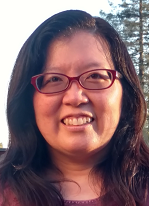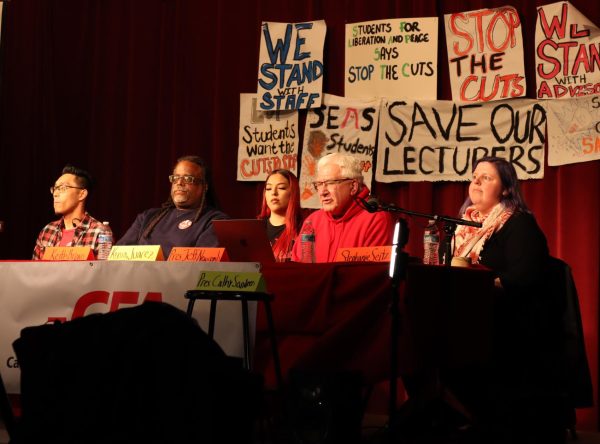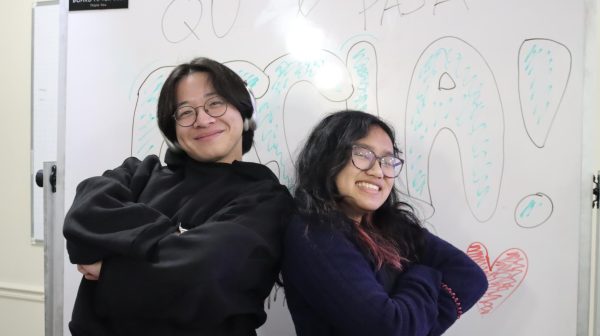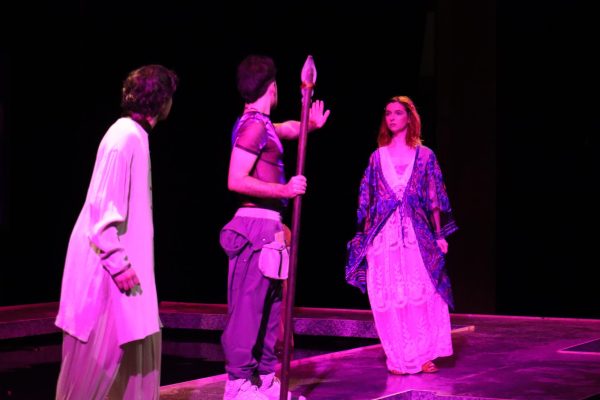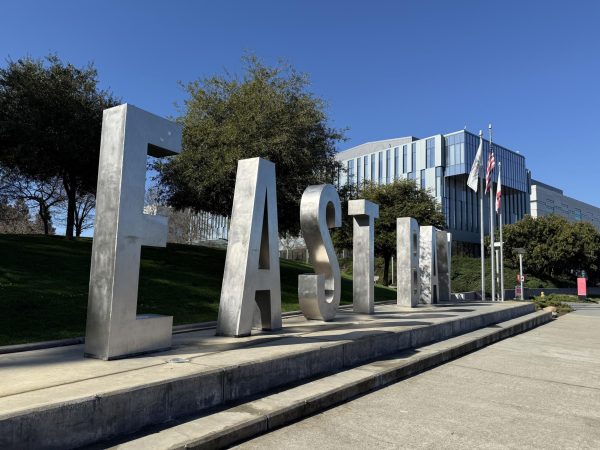Highlighting Dr. Chin-Newman for Women’s History Month: CSUEB Professors
HAYWARD, Calif.– To bring awareness of intersectional issues within the Women’s Movement and Women’s History Month, Dr. Christina Chin-Newman gave an interview with The Pioneer. Dr. Chin-Newman offers a psychological perspective into the development of minds en masse regarding the subject of women’s history and gender as a concept through an educational system embedded in Eurocentric beliefs.
What is your educational background?
I have a Ph.D. in psychology from the University of California, Santa Cruz – I am a research psychologist specializing in developmental psychology, primarily child and adolescent development. I also have a master’s degree in education from Harvard. For my bachelor’s degree at the University of California, Berkeley, I double-majored in English and Molecular Cell Biology and minored in Music. Studying all of these different things means that I have felt at home in my interdisciplinary department of Human Development and Women’s Studies.
What did your doctoral research focus on? Areas of research?
My dissertation was about social support for teenagers involved in the arts – visual arts, theater, music, or creative writing. I’ve also studied high school students who participated in a mural project in Hayward or an arts-based peace education program in Mexico. At California State University, East Bay, I have studied students in Eric Kupers’ Inclusive Interdisciplinary Ensemble, transfer students, and students with disabilities or accommodation needs.
What courses do you teach at EB at the moment?
I’m currently teaching Applying Theories and Methods in Human Development (this course has a service-learning requirement), and Creative and Artistic Development in Early Childhood.
What does Women’s History Month mean to you?
Well, it brings back memories of my 5th-grade teacher in Oakland, who had us write up a biography of a famous woman and also dress up as her on “Herstory” day.
Do you see a lack of intersectionality within the Women’s Movements and Women’s History Month in the United States? Bay Area?
Yes, I think that our educational systems and the way that we are taught history [tends] to be Eurocentric. For example, I attended public schools in Oakland, and my 5th-grade teacher suggested that I be Elizabeth Cady Stanton, who was a famous white suffragette, a women’s rights activist like Susan B. Anthony. However, what if we had learned about more role models who were women of color? I did learn about Rosa Parks in school, but what about other civil rights activists like Fannie Lou Hamer, Dolores Huerta, Wilma Mankiller, Yuri Kochiyama, or Grace Lee Boggs, who was Chinese American like me?
If so, how can we work together as a community to kindle an environment which uplifts voices of marginalized members within the community?
I think that having a Women’s Center on campus for students would be a welcome addition as a gathering place and also for hosting a regular series of women speakers, including alumnae and local leaders. There could be programs to support students who are mothers, mentoring programs for women (especially in fields that are male-dominated), and leadership development activities. There could definitely be intersectional programming like events for BIPOC women, LGBTQ+ women, and women with disabilities.
In what ways do you wish to see CSUEB celebrate Women’s History Month?
I would love to see departments across campus address women’s contributions to their fields in the past, present, and future. For a male-dominated field, they could discuss why women have been underrepresented and, going forward, why it is important and what their field can do to correct that. For a female-dominated field or a field in which women have traditionally participated, they could discuss why the field may lack respect and/or have low salaries.
Are there any events/movements within the greater Bay Area you are involved with for celebrating women’s history month?
No. I feel like there is more of a focus on learning about anti-Black racism and anti-Asian hate now, which is great. But clearly, we also want to educate people specifically about contributions of and obstacles facing Black women, Asian/Pacific Islander women, and other BIPOC women. According to BIPOC individuals in many social justice movements, not just women’s rights, their perspectives and issues have been shortchanged by a focus on white people (e.g., LGBTQ+ rights, disability rights).
What change within the academic world do you want to see in regards to creating more intersectional agenda both in the long and short term?
In academia, as in medicine, specialized knowledge and research expertise are most highly sought and rewarded. However, many social problems are complex and creative solutions may require a broader understanding, which can be gained through interdisciplinary collaboration. More support for interdisciplinary departments and programs, like Human Development, Women’s and Gender Studies, Ethnic Studies, and Disability Studies, would help us to question overly simplistic, essentialist, binary conceptions of gender, race, disability, and other aspects of people’s identities. Professors should be supported to learn about and strive toward gender equity and other types of equity, in their teaching, research, and service to the university.
From a human development perspective, what impact does a lack of intersectional history in the public k-12 system have on long-term perceptions of gender, race, and class in America?
It is a fundamental problem with our public K-12 education that over 60 years after the Brown v. Board of Education ruling to desegregate schools, BIPOC students still experience a separate and unequal education based on the property values of where they live, which have been affected by past practices like redlining. I’m excited that a course in Ethnic Studies, a discipline founded through the united efforts of Black, Latinx, Asian American, and Native American activists, will soon be required in California high schools and throughout the CSU system. However, I also want to acknowledge that ideally the content of Ethnic Studies would be infused throughout the curriculum, starting as early as pre-K. This would be the best way to enact social change, like dismantling the “model minority” myth, in the next generation. The “model minority” myth was invented by a white sociologist in reaction to the Black Power and civil rights movements in the 1960s. The goal of the “model minority” myth was not to uplift Asian Americans, but to portray Black and Asian communities as in opposition to each other, and completely discount the roles of systemic racism against both Black Americans and Asian Americans in their history in the United States. The intersection of racism and sexism needs to be examined in order to dismantle the different gender-based stereotypes associated with, for example, Black women and Black men, and Asian women and Asian men (not to mention the difficulties of being a trans or non-binary person). And class tends to not be discussed at all in America but is tied to race and varies within racial groups, especially among the dozens of ethnic groups under the Asian American/Pacific Islander umbrella. If we tackled the injustice of how parents, especially single mothers are treated in this country, more fair and family-friendly policies would mean a better society for everyone – all children, including white children.
How can the arts aid in collective healing of women and marginalized communities?
I believe that all people are capable of being creative, and collaborative creativity can be very meaningful and restorative. I have found the lives of Judy Baca (muralist) and Ruth Asawa (sculptor who was also an arts activist) to be inspiring. Judy Baca, a Chicana artist, who works in a very collaborative way with community members when designing and painting murals; she is well-known for the Great Wall of Los Angeles, a huge project in which she empowered hundreds of schoolchildren from diverse ethnic backgrounds, through their collaborative work portraying an inclusive history of California. Ruth Asawa was a Japanese American artist who was unjustly incarcerated during World War II; in addition to producing highly original sculptures and art, she was a mother of six and a very influential arts education activist in the San Francisco schools.


